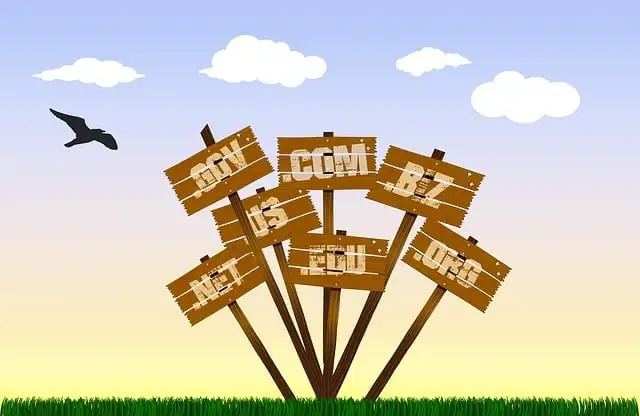URLs. They’re one of the more basic elements of SEO. Yet they’re quite crucial.
In fact, Backlinko reports that URLs are an important factor needed for ranking.
More specifically: URL length ranks at #46 in Google’s top 200 factors that are ranking URL path ranks at #47 Keyword in the URL ranks at #51 URL string ranks at #52
So when you add it all together, URL optimization is a type of deal that is big. Plus it doesn’t seem difficult.
Use a few words that refer to your content URL slug, throw in a keyword or two and you’re good. Right?
If perhaps it were that facile.
In reality, there’s a science that one should follow for proper URL optimization.
But after a lot of research and plenty of trial and error back at my end, we’ve shown up by what we believe is a rock-solid formula.
It covers all the basics and will meet both search engine algorithms and undoubtedly human users.
In this post, we are going to spell out the science behind creating URLs for great SEO as well as the logic behind each tactic.
So let’s get to it.
Choose a top-level domain
Let’s begin with the start.
There’s an infographic from Search Engine Land that covers all the details of an SEO-friendly URL structure.
A very important factor they point out is the fact that using a top-level domain (TLD) is usually your bet that is best.
This simply implies that it is ideal to make use of a “.com” domain rather than “.biz”, “.pro”, “.tel”, etc.
Now we’re not saying if you use anything other than “.com” for your domain that you’re doomed. In fact, TLD does not directly impact rankings. Exactly what it does is, it has a tendency to increase trust for human users.
And also this is huge.
When anyone trust your domain, it’s likely to trickle down and have an impact that is positive on your overall SEO.
We recognize that causing the point does do you a lot in the event that you currently have a domain apart from “.com.”
Also, realize that it’s simply not realistic to be able to land your name brand with a “.com” domain (there were over 124 million “.com” domains of 2016). But it’s something to consider if you’re choosing a domain as time goes by.
Some insight of this post will make you guide through in the event that the domain name you would like is already taken.HTTPS is perfect
Online security is a huge issue these days. With cybercrime and identity theft on the rise, online users need to know that they’re using a connection that is secured.
Just have a look at the way the damage that is monetary have to happen by cybercrime has grown from 2001 to 2015.
It’s dramatic.
As a result, we really recommend using HTTPS instead of HTTP.
If you’re unfamiliar with the difference, HTTPS stands for, it is “HyperText Transfer Protocol Secure,” which will be the secure type of HTTP.
This simply ensures that information on a web page has encryption, which highest security standard.
Here’s an illustration of this distinction between HTTP and HTTPS.
This not only maintains visitor performance at ease, but this has actually become a ranking signal.
According to Search metrics, “HTTPS is starting to become more relevant as well as a ranking signal for Google. Encryption is primarily very important to sites with purchasing processes. It is also sensitive to client information and improves trust and conversion rates.”
As well as in our estimation, this really is likely to become a higher-ranking signal later on. In case the site hasn’t yet received an SSL certificate, we suggest looking for this ASAP.
This is especially true in the event that you actually process customer orders. And also capture sensitive financial information online.
You can learn about the details of this process here.
There are many companies you can easily pick from to get an SSL certificate. One of the top providers is Namecheap.
- First, you must select a plan to purchase.
- Then select the number of years you need your SSL certificate .
- Then confirm your order.
Once it is active, you’ll certainly need to install your SSL certificate and improve your site to use HTTPS. It is fairly technical, but you can find pretty much everything you may need with this resource.
It will walk you through detail by detail.
Given that we’ve got the high-level technical facets of URL optimization out of the way, let’s get down seriously to the nuts and bolts.
The element we’d prefer to address first is length, plus it’s a biggie. But when you break it all down, making a choice on the length of a URL, it is fairly simple. The shorter the better.
According to Backlinko, “Shorter URLs have a tendency to rank much better than long URLs.”
To prove this, they performed some testing that is extensive one million Google search engine results.
Here’s a graph that displays how Google rankings decline as URL length gets longer.
It’s a cut that is pretty dry. Notice how the top position has URLs with roughly 50 characters. But as soon as you move down seriously to the number 10 spot, the typical URL has 62 characters.
So somewhere around 50 – 60 characters is a fairly good number to shoot for. If you choose to go way beyond (say 80+ characters), it is very likely to have a bad effect on your ranking.
How many words you should utilize?
You will need to aim for around three to five words per URL. Because it’s simple and easy gives users a pretty clear notion of what a particular piece of content is about.
Listed below are a couple of examples from NeilPatel.com
See what we’re Talking About?
Keep consistently the number of words in your URLs to the absolute minimum. Where viewers could still get a sense of what you could expect them find by simply clicking those links.
Readability
As said earlier, there’s a correlation between user-friendliness and SEO that is overall.
They’re forever intertwined.
And also this is almost certainly true with regards to URL optimization.
Or as Moz puts it, “A well-crafted URL provides both humans and the search engines with an easy-to-understand indication of what the destination page will likely be about.”
This brings us to the next point.
You really need to attempt to structure your URLs for maximum readability.
While we recognize that this can be an inherently subjective term, we do believe that this “scale of readability” illustration explains it quite nicely.










Leave a Reply